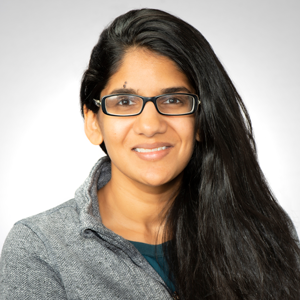

Pitt Clinical and Translational Science Institute Presents
SPARK SUMMIT 2022
Speakers
Keynote Address

Eric Anderson, MFA MA - Keynote Speaker
Associate Professor, School of Design Senior Associate Dean of the College of Fine Arts Carnegie Mellon University
How Reframing Healthcare Research Through Human Centered Design Can Deliver More Impactful and Sustainable Outcomes
Meet Professor Anderson
Eric Anderson is a tenured professor in the School of Design at Carnegie Mellon University where for over 20 years he has taught design and visualization studios within the context of product and related service experiences at the undergraduate and graduate levels. He was one of the co-founders and former co-director of the Integrated Innovation Institute before returning to full-time teaching and research in the School of Design.
Prior to teaching at Carnegie Mellon, Prof. Anderson spent over a decade as a full-time design practitioner for corporate departments and consulting firms based in New York, New Jersey, and Pennsylvania. Anderson is a Past President of the Industrial Designers Society of America (IDSA), and a member of the prestigious IDSA Academy of Fellows. He holds a BS in Industrial Design from the University of the Arts, and a MA and MFA in Design Education from The Ohio State University.
HCD for Intervention Design

Robert Coulter, PhD MPH
Assistant Professor of Behavioral and Community Health Sciences, Pediatrics, and Clinical & Translational Science
Generating Teen Dating Violence Intervention Concepts For and By Sexual and Gender Minority Youth: Results from an Online Longitudinal Human-Centered Design Study
We used human-centered design to guide sexual and gender minority youth in creating teen dating violence intervention concepts, and rigorously tested the feasibility, acceptability, and appropriateness of our methods. In this presentation, we will highlight the feasibility results as well as the intervention concepts generated by our youth collaborators.

Megan Hamm, PhD
Assistant Professor of Medicine,
Director of Qualitative Evaluation and
Stakeholder Engagement Research Service
Qualitative Research or Human Centered Design: Why Not Both?
In this presentation, I explore similarities and differences between traditional qualitative research and human centered design methods. Focusing on a recent project that used both traditional qualitative interviews and Design Sprints, I discuss what the research team was able to achieve using each methodology. Additionally, I discuss limitations and benefits of each method from the perspective of a qualitative methodologist.

Karuna Baral
Research Assistant at the Coulter Lab
Using Storyboarding to Design an Intervention for Improving High School Staff’s Support of Sexual and Gender Minority Youth
In a recent feedback session with our community collaborators, we used human-centered design in the form of storyboarding for the purpose of intervention development, having them map out a possible training program for high school staff to help reduce alcohol and drug abuse in sexual and gender minority youth (SGMY).
HCD in Action

Marie Norman, PhD
Associate Professor of Medicine and Clinical and Translational Science

Chelsea Proulx, MPH
Research and Evaluation Specialist, Institute for Clinical Research Education

Will Hierholzer
Human Centered Design Facilitator, Clinical and Translational Science Institute
Recipes for Researchers: Making HCD Easy for Research Teams to Learn and Use
It can be challenging to know when, where, and how to use HCD in the context of research. The CTSI’s Team Science Core wants to make it easier. Our Recipes for Researchers initiative is working to tailor HCD methods and trainings to the specific needs of research teams. In this session, we will introduce you to three simple-but-powerful “recipes” (i.e., combinations of HCD methods) that you can use in a wide variety of research situations. You will walk away with a Concept Poster for each recipe and ideas for dozens of research-relevant applications. The session will be interactive, so prepare to give us feedback using Rose Thorn Bud.
HCD for Manuscript and Grant Writing

Judith Resick, MSN MPH RN
Nurse Research Program Manager at the Palliative Care Research Center
Using HCD to Brainstorm: How 21 Researchers Generated 25 ‘Shovel-Ready’ Projects Using a Creative Matrix
Upon completing enrollment and data collection for our clinical trial of a primary palliative care intervention, we brainstormed manuscript ideas and next steps with our co-investigators, collaborating faculty and staff, and mentees using a Creative Matrix. From this exercise, we generated a "shovel-ready" analysis list of 25 topics, which we continue to use when potential collaborators approach us.

Tiger Litam, MHA CPH
Health Services Specialist

Robert Coulter, PhD MPH
Assistant Professor of Behavioral and Community Health Sciences, Pediatrics, and Clinical & Translational Science
Leveraging Human-Centered Design to Co-Develop Manuscript Discussion Sections
To aid in the development of manuscript discussion sections, we used an online collaborative platform (MURAL) where coauthors independently brainstormed Discussion section elements using Rose-Thorn-Bud and organized the ideas into an outline using Affinity Clustering. We will describe our process, outcomes, and lessons learned to show others how they can use these methods to co-create Discussion sections with their teams.

Doris Rubio, PhD
Director of the Institute for Clinical Research Education

Chantele Mitchell-Miland, PhD MPH
Post-Doctoral Fellow at the Institute for Clinical Research Education
Using Human Centered Design Recipes to Develop Qualitative Interview Guides
We used Experience Diagramming to generate questions for a qualitative interview guide and a Think Aloud protocol to get feedback on those questions from a larger group of stakeholders. We believe the data gathered yielded a better interview guide.
HCD for Community Engagement

Sara Baumann, PhD MPH
Assistant Professor, Department of Behavioral and Community Health Sciences

Jessica Burke, PhD MHS
Professor, Department of Behavioral and Community Health Sciences and Vice Dean, School of Public Health
Embracing Human-Centered Design Tools to Explore Impacts of an Innovative, Youth-led Comprehensive Sexuality Education Model in Madagascar
In this presentation we will share findings from a project conducted in partnership with Projet Jeune Leader in Madagascar to explore how their comprehensive sexuality education program model is impacting other aspects of human development, students’ lives, and communities. We used brainstorming and affinity clustering in 7 workshops, across 6 cities, with 90 school administrators in both urban and rural schools in Madagascar.

Maya Ragavan, MD MPH MS
Assistant Professor of Pediatrics
Associate Vice Chair for Diversity Equity and Inclusion Research for the Department of Pediatrics

Joseph Amodei, MFA
Assistant Professor of Immersive Media, Chatham University
Applying human centered design to examine the COVID-19 vaccination experience of immigrant and refugee communities in Pittsburgh.
In this talk, we will be discussing a community-partnered research project where we conduct focus groups in multiple languages to examine the COVID-19 vaccination experience of immigrant and refugee communities. We will review how we applied human centered design to study conceptualization, data collection, and data analysis and ways to interweave the principles of human centered design and community-partnered research. We will also discuss lessons learned using the collaborative software program, Miro, for our project.

Justin Yu, MD MS
Assistant Professor of Pediatrics Assistant Director of Collaboration and Community Outreach, Palliative Research Center
Using HCD to Develop a Hospice Educational Program for Black Lay Ministers
I will discuss how our team used human-centered design principles and activities to engage lay ministers at Destiny of Faith Church to collaboratively design the content and structure of a lay minister educational and training program. This curriculum is focused on providing lay ministers the knowledge and skills they need to serve as ambassadors between community hospice organizations and their fellow congregants.
HCD for Team Management

Chelsea Proulx, MPH
Research and Evaluation Specialist, Institute for Clinical Research Education

Shannon Valenti, MBA, CIP
CTSI Executive Director, Regulatory Science & Research Facilitation, Clinical & Translational Science Institute
Leveraging Team Expertise to Revitalize CTSI Data Collection and Tracking
In a joint effort between the CTSI Regulatory Core and Evaluation Core, we conducted 3 HCD sessions to guide the revamp of the CTSI Tracking System. During the first two sessions, we led Rose, Thorn, Bud and Bull’s Eye Diagramming activities with the CTSI Research Facilitator group to gather and prioritize data related to the pros and cons of the current system. In the third session, we conducted a Contextual Inquiry to understand the Facilitator user experience. Our insights have provided the groundwork for creating a more user-friendly, accurate, and comprehensive tracking system and process.

Isabel Crevasse, MSLS MA
Instructional Designer, IDEA Lab
Priorities, Preferences, and Problems: Defining Responsibility and Identity on Your Team with Radar Diagrams
The IDEA Lab team at the Institute for Clinical Research Education wanted to ascertain what types of instructional design, graphic design, and media production tasks and subtasks each team member found most personally rewarding. Our goal was to use this information to allocate work more effectively and determine what kinds of projects to accept. We used a modified What’s On Your Radar? activity in which we generated lists of common tasks, duties, and responsibilities we handled and then organized those activities by interest level using a three-tiered system.

Robert Coulter, PhD MPH
Assistant Professor of Behavioral and Community Health Sciences, Pediatrics, and Clinical & Translational Science
Refining Lab Onboarding Processes via Schematic Diagramming
Onboarding research staff and volunteers involves many components which can easily become disjoined and piecemeal. We will describe our process and outcome of using Schematic Diagramming to revamp our Lab’s onboarding process.
Innovate with Us
Don’t miss this opportunity to discover how HCD can enhance your research!

